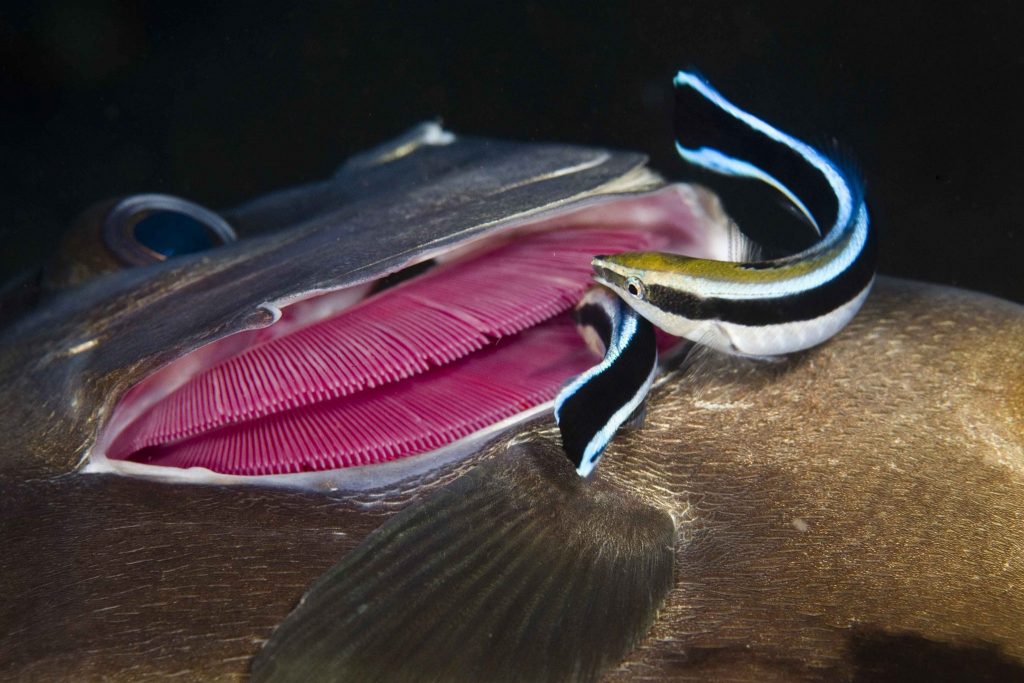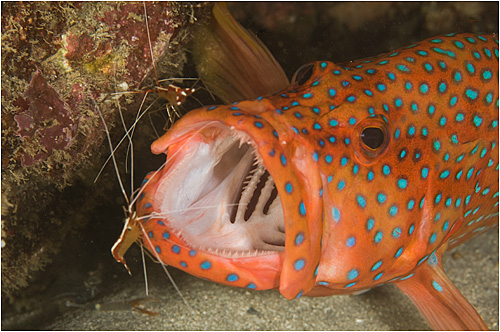There are many symbiotic relationships between organisms in the marine environment, which can have either beneficial or detrimental effects.

Wrasse cleaning the gills of a larger fish (Image: © Shannon Conway)
One relationship that is mutually beneficial for both organisms involved is a service provided by a variety of fish and shrimps at ‘cleaning stations’.
Cleaning stations are locations where fish and other marine life can gather – a bit like a car wash, and get a good clean. When the fish arrive at the cleaning station they can present an ‘unnatural’ pose, which advertises they are ready to be cleaned. For example, a fish may hold its mouth open wide or expose its gills by flaring the operculum (or gill cover).
Cleaner fish (such as certain wrasse and gobies) and cleaner shrimp then provide an important role by removing dead skin and parasites from the skin, scales, mouth and gills. If these parasites aren’t removed they can quickly multiply making the host animal sick.
Did you know…
The blue-striped fang blenny mimics a cleaner wrasse by changing its colour and hides amongst them to get a free meal. Unfortunately for the ‘client’ they don’t eat the parasites – they take a nice bite of healthy scales and skin instead!

